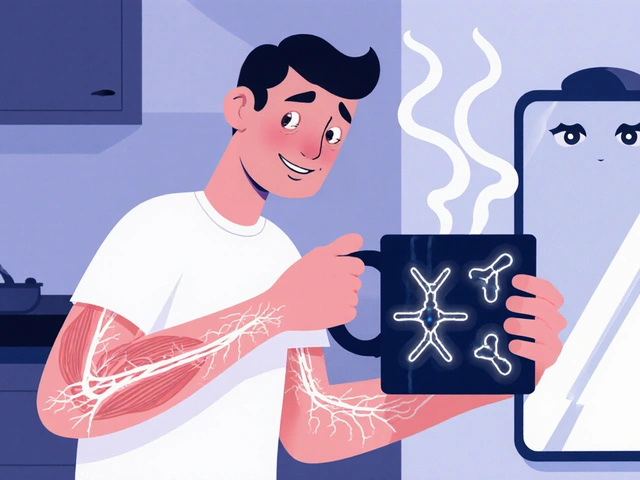SGLT2 inhibitor — what they do and why you might hear about them
SGLT2 inhibitors changed how doctors treat type 2 diabetes. These pills lower blood sugar by making your kidneys dump extra glucose into urine. That sounds odd, but the result is lower A1c, modest weight loss, and reduced blood pressure for many people. Beyond sugar control, these drugs also protect the heart and kidneys for people at risk.
How SGLT2 inhibitors work
Think of SGLT2 as a sugar reuptake pump in the kidney. Drugs like canagliflozin, dapagliflozin, and empagliflozin block that pump. When the pump is blocked, glucose leaves the body through urine instead of being reabsorbed into the blood. The effect is steady glucose lowering without pushing insulin very high. That’s why some patients also see weight loss and less fluid overload — useful in heart failure.
Clinical trials show benefits beyond blood sugar. People taking certain SGLT2 inhibitors had fewer hospital visits for heart failure and slower kidney decline. Those are big wins for people living with diabetes plus heart or kidney risks.
Practical tips & safety — what to watch for
Side effects are usually predictable. The most common: genital yeast infections and urinary tract infections. Why? More glucose in urine feeds yeast and bacteria. Good hygiene and quick treatment usually fix these problems.
Less common but serious issues include dehydration, low blood pressure, and diabetic ketoacidosis (DKA) that can happen with only mildly elevated glucose — called euglycemic DKA. Stop the drug and get medical help if you feel very weak, have nausea, vomiting, stomach pain, or sudden breathing trouble. Also mention a history of foot problems: canagliflozin has been linked to a small increase in leg and foot amputations in one trial, so check with your doctor if you have circulation problems or previous ulcers.
Who should avoid SGLT2 inhibitors? They’re generally not for type 1 diabetes (higher DKA risk), pregnancy, or people with very low kidney function. Your doctor will check kidney function before starting and during treatment because the glucose-lowering effect depends on how well kidneys work.
Simple practical tips: stay hydrated, monitor blood pressure, treat yeast infections early, and tell any provider you’re taking an SGLT2 inhibitor before surgery or if you become ill. If you’re shopping online for meds, use reputable pharmacies and confirm prescriptions — our guides on buying diabetes medicines safely can help.
SGLT2 inhibitors are powerful tools when used right. They help control blood sugar and offer heart and kidney protection for many patients. Ask your clinician how they fit into your overall plan, and keep an eye on symptoms that need prompt attention.
Canagliflozin is a powerful tool in the battle against Type 2 diabetes, working as an SGLT2 inhibitor to help lower blood sugar levels effectively. This article breaks down how Canagliflozin functions, its benefits in controlling diabetes, and practical tips for patients. It also covers potential side effects and considerations to keep in mind. Learn why Canagliflozin might be a good fit for managing diabetes with some real-world insights on its usage. Navigate the ins and outs of this medication and discover how it can support healthier living.
View Details

